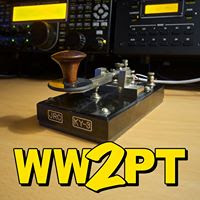Clear at last!
 Despite forecasts of clouds the skies are clear, so we'll give it a shot with the TV85. Temp at 9PM is 66 deg, humidity 81%, but it doesn't feel so bad outside. Skeeters were buzzing a bit but I sprayed myself down and put on some sleeves. Lights from next door and across the street, but hopefully these people will go to bed soon. This is my last shot at observing while Linda is in Texas; she's coming back tomorrow.
Despite forecasts of clouds the skies are clear, so we'll give it a shot with the TV85. Temp at 9PM is 66 deg, humidity 81%, but it doesn't feel so bad outside. Skeeters were buzzing a bit but I sprayed myself down and put on some sleeves. Lights from next door and across the street, but hopefully these people will go to bed soon. This is my last shot at observing while Linda is in Texas; she's coming back tomorrow.Setup: The Starbeam pointer is killing me - I struggle to get it aligned, and the flip mirror is useless. I'm ready to shit-can the thing once and for all if I can only figure out a way to mount the Telrad on the TV85 without having to resort to duct tape.
Did a quick star test with the 8mm LVW; nice circles inside and outside of focus. When I do it with the Powermate in-line the inside circles turn violet. Hmm... Also see a spot which I think is that ding in the diagonal - the idiot I bought it from must have dropped a 1.25" ep in without the adapter in place. I guess a new 99% 2" diagonal is in my future.
Back inside at 9:30pm waiting for things to darken a bit.
10PM: Lights out. Not the darkest skies but the Milky Way was visible overhead in Cygnus. With the S&T Pocket Atlas at hand I hopped to some old favorites: M57 (Ring), M56 (glob), M27 (Dumbell). The LVW13 was the champ again; the LVW8 didn't deliver any more detail, and the dimmer stars in the 8mm made the views less pleasing.
Put the UHC filter on the 42mm LVW and gazed around Cygnus. Open cluster M29 stood out from the crowd, looking like a miniature Hercules keystone asterism. Turned the scope around to Hercules and it's two globulars, M92 and M13. Then packed it in around 11:30. Temp dropped down to 61 deg at 11pm, while humidity rose to 93%. Still, it looks like I lucked out with cloud cover and transparency:
 Notes: I confirmed the distortion issues with the LVW42 - focused stars grow comet tails near the edge; out of focus stars turn into little curved lines. This suggests asttigmatism, as noted by Pensack: "At night, it causes the stars at the edge of the field to appear as short radial lines on one side of focus, and short circumferential lines on the other. In focus, the star images may appear slightly blurry or appear like seagulls or bats." Yeah... what he said!
Notes: I confirmed the distortion issues with the LVW42 - focused stars grow comet tails near the edge; out of focus stars turn into little curved lines. This suggests asttigmatism, as noted by Pensack: "At night, it causes the stars at the edge of the field to appear as short radial lines on one side of focus, and short circumferential lines on the other. In focus, the star images may appear slightly blurry or appear like seagulls or bats." Yeah... what he said!Still, I really like this eyepiece. I'm eager to try it on the Antares, to see if it improves in a scope with a longer focal length. The NebuStar UHC filter did a nice job of darkening the background, though I didn't notice any nebulosity around Sadr. Without the filter, the views around the star clouds of Cygnus looked fairly washed out in the LVW42; with the filter, the stars just seemed to pop out of a near-black background. A UHC filter is certainly not designed to be used on star clusters (unless there is surrounding nebulosity, for example the Pleaides); they will attenuate the light. However in this case, with a low magnification, wide-field eyepiece, I found the trade-off to be positive as the views were much nicer than without the filter.
So while I saw nothing new tonight, I was happy enough just to get back out under the stars. Let's face it, as long as I live where I can only observe at the zenith in the summer, I'm always going to be looking at M57, M27, M13, etc. when using the TV85 - it just ain't cut out for going any deeper. I used to be able to pull out the Night Sky Observer's Guide and view some of the more dificult NGC objects when I had the C8, but 85mm is simply not enough aperture for DSO's under my conditions. Maybe the 5" achro will work better. If not, I think the next scope will have to be a 10" or 12" dob.







<< Home